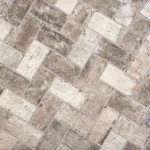Creating a Stylish Outdoor Walkway with Tiles: A Guide to Design and Installation
A well-designed outdoor walkway can enhance the aesthetic appeal of any property, providing a functional and inviting path for navigating the outdoor space. Tiles offer a versatile and durable material option for creating stylish walkways that complement various design styles and landscapes. This article will explore the key considerations for creating a stylish outdoor walkway with tiles, focusing on the design process, tile selection, and installation techniques.
1. Design Considerations for a Tile Walkway
Before embarking on the construction of a tile walkway, careful planning is essential. Consider the following design factors to ensure a functional and aesthetically pleasing outcome:
- Walkway Location and Purpose: Determine the intended location and purpose of the walkway. Will it lead to the front door, connect different areas of the garden, or provide access to a pool or patio? This will inform the design and layout.
- Walkway Width and Length: The width and length of the walkway should be proportionate to the surrounding area and the intended use. A narrow walkway may be suitable for a small garden, while a wider path might be needed for high traffic areas.
- Curvature and Design: Consider the overall shape and layout of the walkway. A straight path may be practical, while a curved design can add visual interest and guide the eye.
- Materials and Style: Choose materials that complement the existing architecture and landscaping while ensuring durability and functionality. Tiles can be sourced in various materials, colors, and patterns to create a unique and cohesive design.
- Accessibility: Ensure the walkway is easily accessible for all users, considering factors like slope and surface texture.
2. Choosing the Right Tiles for Your Walkway
The selection of tiles is crucial for the longevity and aesthetic appeal of your walkway. Consider the following factors:
- Material: Tiles are available in various materials, each with distinct characteristics:
- Ceramic Tiles: Durable, affordable, and available in a wide range of colors and patterns. Suitable for moderate traffic areas.
- Porcelain Tiles: Highly durable, stain-resistant, and frost-proof. Ideal for high-traffic areas and locations prone to freezing temperatures.
- Natural Stone Tiles: Offer a natural and luxurious look. Popular options include granite, sandstone, slate, and limestone. However, they can be more expensive and require sealing for protection.
- Concrete Pavers: Durable, affordable, and available in various shapes and colors. Offer a modern and clean aesthetic.
- Color and Pattern: Select tile colors and patterns that harmoniously integrate with the existing landscape and architecture. Consider using contrasting colors to create visual interest or coordinating colors to blend seamlessly with surroundings.
- Size and Shape: The size and shape of tiles can influence the overall design and layout. Larger tiles can create a clean and minimalist look, while smaller tiles can create a more intricate pattern.
- Slip Resistance: Choose tiles with a slip-resistant surface to prevent accidents, especially in areas prone to moisture.
3. Installation Techniques for a Tile Walkway
Once the design is finalized and the tiles are selected, proper installation is essential for creating a durable and aesthetically pleasing walkway. Follow these steps for a successful installation:
- Prepare the Base: Ensure a firm and level base for the tile installation. This may involve excavating the area, adding a layer of gravel or sand, and compacting the base for stability.
- Lay a Mortar Bed: Spread a layer of mortar on the prepared base, creating a bed for the tiles. Ensure the mortar bed is evenly distributed and the proper thickness is maintained.
- Install the Tiles: Place the tiles onto the mortar bed, ensuring proper spacing and alignment. Use spacers to maintain consistent gaps between tiles.
- Grouting: Once the mortar has set, apply grout between the tiles to fill the gaps and provide a finished look. Select grout that complements the tile color and is appropriate for outdoor use.
- Sealing: Apply a sealant to protect the tiles from stains, moisture, and weathering. Follow the manufacturer's instructions for proper application.
By carefully considering design elements, selecting appropriate tiles, and implementing proper installation techniques, you can create a stylish and functional outdoor walkway that enhances the beauty and functionality of your property. Remember to prioritize durability, aesthetics, and accessibility to ensure a walkway that meets both functional and aesthetic needs.

State Of The Art Interlocking Concrete Block Pavement Technology In Japan As A Post Modern Sciencedirect

State Of The Art Interlocking Concrete Block Pavement Technology In Japan As A Post Modern Sciencedirect

State Of The Art Interlocking Concrete Block Pavement Technology In Japan As A Post Modern Sciencedirect

Comparing The Performance Of Historical And Regular Stone Pavement Structures In Urban Trafficked Areas Through Finite Element Method Fem
2 Construction Detail Of Standarded Building Scientific Diagram

Theoretical Modelling Experimental Testing And Simulation Ysis Of Thermal Properties For Green Building Insulation Materials

Exploring The Integration Of Architectural Design And Advanced Structural Ysis For Steel Glass Structures A Comparative Study Diffe Case Scenarios

Slab Design Combining Interlocking Blocks With A Structural Sheet Sciencedirect

Mechanical Behavior And Fracture Toughness Characterization Of High Strength Fiber Reinforced Polymer Textile Composites Iranian Journal

Implementation Of Parametric Modeling To Design Miura Origami Inspired Canopy Toward Adaptive Urban Habitat Architecture Structures And Construction
Related Posts








